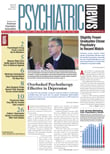Medicare payments to physicians should be increased next year by 1 percent, according to a report last month to Congress by the Medicare Payment Advisory Commission (MedPAC).
The committee's recommendations came just days after the federal Centers for Medicare and Medicaid Services (CMS) forecast a massive 29.5 percent cut next year for physician payment under the sustainable growth rate (SGR) formula.
In its report, the commission stated that "available data find that, overall, Medicare payments [at current levels] for physician and other health professional services are adequate. Access, supply, quality, and volume measures suggest that most Medicare beneficiaries are able to obtain physician services with few or no problems."
The report added that a 2010 patient survey by the commission found that "Medicare beneficiaries (age 65 or older) were more likely to report better access to physicians than privately insured individuals (age 50 to 64)."
However, the commission noted that "relative to current law, this recommendation [for a 1 percent update] is estimated to increase federal program spending by more than $2 billion in the first year and by more than $10 billion over five years."
Physician payment under the Medicare program has evolved into a repetitive drama, with increasingly draconian cuts being forecast each year by CMS followed by vigorous protests from physician groups and last-minute reprieves granted by Congress. Last year Congress extended 2010 Medicare physician payment rates through the rest of 2011, blocking a dramatic 25 percent across-the-board cut that was to have taken effect January 1 (Psychiatric News, January 7).
The MedPAC recommendation is not binding on Congress, but is used as a starting point for negotiations. The 2012 reduction is the largest that physicians have faced.
APA, the AMA, and other physician and senior groups such as AARP have consistently argued that the entire formula—especially the sustainable growth rate component, which requires increases in Medicare volume to be compensated for by decreases in payment—needs to be reformed.
"The AMA concurs with MedPAC's conclusion that the nearly 30 percent cut built into Medicare's payment system for 2012 would jeopardize access to physician services for many patients and should be replaced with a positive update to help offset increases in practice costs," said AMA President Cecil Wilson, M.D., in a statement.
In testimony before Congress, Med-PAC Chair Glenn Hackbarth, J.D., discussed the flaws of the SGR formula and the concern that continued uncertainty about payment rates can have on the stability of the Medicare program.
"A main flaw of the SGR is it neither rewards individual providers who restrain unnecessary volume growth nor penalizes those who contribute most to inappropriate volume increases," he said. "Indeed, volume growth has been a major factor in the prescribed SGR payment cuts—cuts expected to be at least 25 percent in 2012.
"There is general consensus that fee cuts of that magnitude would be detrimental to beneficiary access to care, and legislative overrides of the SGR have averted payment cuts in recent years," Hackbarth said. "However, these overrides are merely temporary, leading to mounting frustration among physicians, other health professionals, and their patients and to a desire for a longer-term remedy. However, the high budgetary cost of eliminating some or all of the scheduled fee cuts in the longer term has prevented such proposals from becoming law.... The commission plans to continue to work on SGR payment policies and consider various approaches for updating Medicare's physician fee schedule."
